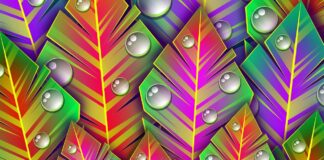Graph Neural Networks (GNNs) have emerged as a powerful tool for analyzing and modeling data with complex relationships. They are specifically designed to operate on graph-structured data, where entities (nodes) are connected by relationships (edges). GNNs have gained significant attention and achieved remarkable success in various domains, including social network analysis, recommendation systems, drug discovery, knowledge graph reasoning, and computer vision tasks such as image segmentation and object detection.
Graph Neural Networks leverage the inherent structural information present in graphs to learn and reason about the data. They extend traditional neural networks to handle graph inputs, enabling them to capture both local and global dependencies within the graph. GNNs operate by propagating information through the graph, aggregating and transforming features at each node based on its neighborhood. This process allows GNNs to learn and infer information from both the node’s attributes and the graph topology.
1. Graph Neural Network Architecture: GNNs consist of multiple layers, with each layer performing a message passing step followed by a node-level aggregation step. The message passing step involves updating node features by aggregating and transforming features from neighboring nodes. The node-level aggregation step combines the updated node features to produce an aggregated representation for each node.
2. Node Embeddings: GNNs learn node embeddings that capture both the inherent attributes of the nodes and the structural information from the graph. These embeddings encode rich representations of the nodes, which can be used for downstream tasks such as node classification, link prediction, and graph clustering.
3. Edge Embeddings: In addition to node embeddings, GNNs can also learn edge embeddings, which capture the relationships between nodes. Edge embeddings provide additional information that can be useful for tasks such as link prediction and graph generation.
4. Graph Level Representation: GNNs can also learn a graph-level representation by aggregating the node embeddings. This graph representation summarizes the entire graph and can be used for tasks such as graph classification and graph regression.
5. Message Passing Mechanism: The message passing mechanism in GNNs allows nodes to exchange information with their neighbors iteratively. At each layer, nodes aggregate and transform the messages received from their neighbors, updating their own features based on the aggregated information.
6. Graph Convolutional Networks (GCNs): GCNs are a popular variant of GNNs that employ graph convolutional operations. These operations use a weighted sum of neighbor features to update the target node’s representation. GCNs have been successful in various tasks, owing to their simplicity and effectiveness.
7. Graph Attention Networks (GATs): GATs introduce attention mechanisms into GNNs, allowing nodes to selectively attend to different neighbors during message passing. By assigning attention weights to neighbors, GATs can focus on more relevant information and improve performance.
8. Graph Pooling: Graph pooling is the process of aggregating nodes or subgraphs into a coarser representation. It helps reduce the graph size while preserving important structural information. Graph pooling is analogous to the pooling operation in convolutional neural networks (CNNs).
9. Graph Generation: GNNs can be used for generating new graphs by training them to capture the distribution of the underlying graph structure. Graph generation is valuable in various applications, such as molecular design in drug discovery and synthetic data generation for testing algorithms.
10. Scalability and Efficiency: Scaling GNNs to large graphs is an ongoing research challenge. Deep GNN architectures can suffer from the over-smoothing problem, where node representations become indistinguishable across layers. Researchers are exploring techniques like graph coarsening, sampling, and parallelization to make GNNs more scalable and efficient.
Graph Neural Networks (GNNs) have emerged as a powerful framework for learning and reasoning over graph-structured data. In recent years, they have gained significant attention due to their ability to handle complex relational information and their success in various domains, including social network analysis, recommendation systems, molecular chemistry, and knowledge graph reasoning. In this comprehensive explanation, we will delve deep into the concept of Graph Neural Networks, discussing their architecture, training process, and applications.
Graph Neural Networks, often referred to as GNNs, are a class of neural networks designed to operate on graph-structured data. Graphs are mathematical representations that consist of nodes (also known as vertices) and edges (also known as links) connecting these nodes. Nodes can represent entities such as users, documents, or proteins, while edges capture the relationships or interactions between these entities. GNNs leverage this rich relational structure to extract meaningful representations from graphs, enabling powerful learning and reasoning capabilities.
The key idea behind GNNs is to propagate information along the edges of a graph and aggregate it at each node to update their representations. By iteratively passing messages between connected nodes, GNNs enable nodes to incorporate information from their local neighborhoods, capturing both the local and global graph structure. This iterative process is typically performed over multiple graph convolutional layers, which are the building blocks of GNNs.
At each layer, a GNN processes the node and edge features to generate updated representations for each node. These representations encode the local and contextual information from the graph. The main operation in a graph convolutional layer is message passing, where each node aggregates and transforms information from its neighbors. This aggregation step is often performed using a weighted sum or a more sophisticated attention mechanism, allowing nodes to give different importance to different neighbors. The aggregated information is then combined with the node’s existing representation and passed through a non-linear activation function to produce the updated node representation.
The parameters of a GNN, including the weights in each graph convolutional layer, are learned through a training process. This process involves minimizing a loss function that measures the discrepancy between the predicted outputs of the GNN and the ground truth labels or targets associated with the nodes or the entire graph. The most common approach to training GNNs is through backpropagation and gradient descent, where gradients are computed and propagated through the layers to update the model’s parameters.
One of the key advantages of GNNs is their ability to capture both the structural information and the node features present in a graph. The node features can be any type of information associated with the nodes, such as attributes, embeddings, or numerical values. GNNs can effectively exploit these features to make predictions or perform downstream tasks. For example, in a social network, the node features could represent user profiles, and the task could be predicting user preferences or inferring missing connections between users.
GNNs have found applications in various domains. In social network analysis, they have been used for community detection, link prediction, and influence maximization. By learning representations that capture the underlying community structure and social interactions, GNNs can provide valuable insights into the network’s dynamics. In recommendation systems, GNNs have been employed to model user-item interactions and make personalized recommendations. By exploiting the graph structure that represents the user-item relationships, GNNs can effectively capture the collaborative filtering signals and provide accurate recommendations.
In molecular chemistry, GNNs have revolutionized the field of drug discovery. By representing molecules as graphs, with atoms as nodes and chemical bonds as edges, GNNs can learn powerful representations that capture the molecular structure and properties. This enables tasks such as molecular property prediction, drug discovery, and virtual screening to be performed more efficiently and accurately. GNNs have also been applied to knowledge graph reasoning, where the goal is to perform inferencing and knowledge extraction on structured knowledge graphs. By leveraging the graph structure and incorporating semantic information encoded in node and edge features, GNNs can reason over complex relationships, perform entity classification, and support question-answering systems on knowledge graphs.
The success of GNNs can be attributed to their ability to handle various graph types, including directed and undirected graphs, heterogeneous graphs with different node and edge types, and even temporal graphs where edges and nodes change over time. This flexibility allows GNNs to model diverse real-world scenarios accurately. Additionally, GNNs can handle graphs of different sizes, from small-scale graphs with a few nodes and edges to large-scale graphs with millions or even billions of nodes. This scalability makes GNNs suitable for analyzing massive networks, such as social media platforms or the World Wide Web.
In recent years, several variants and extensions of GNNs have been proposed to further enhance their capabilities. Some of these include Graph Convolutional Networks (GCNs), GraphSAGE, Graph Attention Networks (GAT), Graph Isomorphism Networks (GIN), and Graph Transformers. Each variant introduces unique architectural modifications or attention mechanisms to improve the performance of GNNs in specific tasks or address specific challenges.
Despite their effectiveness, GNNs also face certain limitations. One challenge is the over-smoothing problem, where the representations of nodes tend to become overly similar after several iterations of message passing. This can result in the loss of discriminative power and hinder the GNN’s ability to differentiate nodes effectively. Various techniques, such as residual connections, skip connections, and graph pooling, have been proposed to mitigate this issue and improve the expressive power of GNNs.
Another challenge is scalability, especially when dealing with large-scale graphs. GNNs often require significant memory and computational resources to process and update representations for each node in the graph. Several approaches have been proposed to address this challenge, including sampling-based methods, graph partitioning, and parallelization techniques. These methods aim to reduce the computational complexity and memory requirements of GNNs while preserving their effectiveness.
Interpreting and understanding the decision-making process of GNNs is another area of active research. GNNs are often considered as black-box models due to the complex nature of their computations and the lack of interpretability. Efforts are being made to develop techniques for interpreting the learned representations and understanding the reasoning process of GNNs. This can help build trust in GNN-based systems and provide insights into the underlying graph structure.
In conclusion, Graph Neural Networks (GNNs) have emerged as a powerful framework for learning and reasoning over graph-structured data. They enable effective information propagation and aggregation across graph nodes, allowing for the extraction of meaningful representations that capture both local and global graph structure. GNNs have demonstrated remarkable success in various domains, including social network analysis, recommendation systems, molecular chemistry, and knowledge graph reasoning. With their ability to handle different graph types, scalability, and flexibility, GNNs continue to be a promising approach for tackling complex real-world problems. Ongoing research aims to address challenges such as over-smoothing, scalability, and interpretability, further advancing the capabilities of GNNs and unlocking their full potential in diverse applications.














